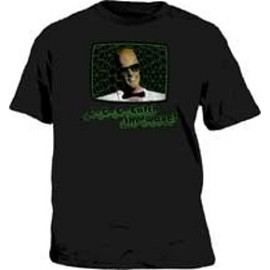

Meanwhile, Wagg was attempting to produce his original project, the Max Headroom video show, and had signed on the comedy-writing team of Paul Owen and David Hansen - veterans of such satirical British TV shows as Not the Nine O'Clock News - to fashion material for Max. Afraid that the popular reporter's absence from the airwaves will stir unwanted inquiries, network execs allow a malign computer genius in their employ to feed the reporter's cranial specifics into corporate data banks, thus creating Max Headroom, the computer-generated generic TV star.Įasing into a writer-director slot, Roberts retired with the rest of the Max team to "a very bad hotel in Cornwall," where they beat the screenplay into shape. The reporter is captured and nearly killed by minions of his own employer, the gigantic Network 23, which has secretly been airing the blipverts. The script told the story of a star TV reporter of the future who unearths a scandal - something to do with "blipverts," a highly condensed form of subliminal advertising that is causing death by spontaneous combustion among passive TV viewers.

#MAX HEADROOM T SHIRTS SERIES#
"We had no script, we had no image of Max, didn't know what he was gonna look like."īut within 48 hours, Potter agreed to lay out half a million HBO bucks for joint production of Wagg's TV movie, Max Headroom: 20 Minutes into the Future.īy the summer of 1984, Stone had dropped out of the project, leaving behind a screenplay that, in the words of Steve Roberts, the writer recruited to replace him on the team, "was a series of brilliantly connected brilliant notions, but unmakable as a movie."

"I talked her through this stupid story about this investigative journalist who hits his head on a crash barrier," Wagg recalls. In late February he made his pitch to Bridget Potter, head of original programming at HBO and Cinemax in New York. Wagg was advised to take his case to the States. He and his colleagues were flush with ideas, but almost entirely lacking a script, a visual concept and, of course, money.Ĭhannel Four would shell out for the original video series but couldn't fully fund the one-hour TV film that Wagg's team was proposing. "We decided," says Jankel, "that what we really wanted was to make a paranoid-conspiracy movie."Īs 1984 dawned, Wagg saw his modest idea ballooning into a veritable saga. We decided Max should be a character - a computer-generated TV host." And to make clear the origins of that computer- generated character, the Max team - Jankel, Morton, Stone and Wagg - eventually realized that their video show would require an extensive prologue of some sort. "We didn't think this idea was particularly inspiring. "Originally, what Chrysalis wanted was just graphics and effects and animation to link pop videos," Jankel recalls. It was 1983 by the time Wagg commissioned the well-regarded video team of Rocky Morton and Annabel Jankel to help to bring this nebulous concept into reality. He also came up with an evocative name for the proposed program: The Max Headroom Show, suggested by a common abbreviation of the Britain's "maximum headroom" vehicular warnings, familiar to motorists from highway underpasses and parking garages. Stone suggested a computer-oriented format. Wagg approached George Stone, an advertising copywriter and former colleague, for input. Wagg and Parks previously had launched the first of what has since become an annual British video-awards show, and both felt that a weekly music-video program also would fly.Ĭhrysalis came up with development money for such a series, but who should host it? "I didn't want a human being," says Wagg, "because the only point in doing this was if it was international, and I felt that an individual presenter wouldn't travel." The project proceeded slowly. Peter Wagg, producer of The Max Headroom Show, was head of creative services at Chrysalis Records in London five years ago when Andrew Park, a commissioning editor at the then-new Channel Four, suggested he develop a half-hour show devoted to rock videos. The roots of this knowing lampoon lie, appropriately enough, in advertising, that fertile netherworld where art and commerce find common cause.


 0 kommentar(er)
0 kommentar(er)
